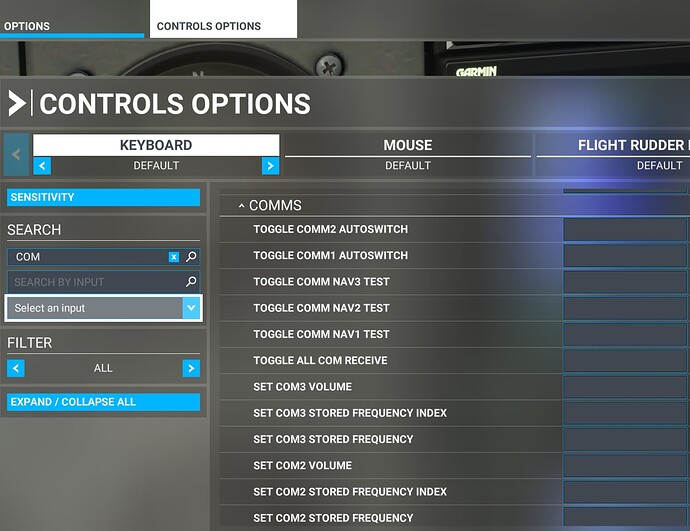The current shortcuts system assigns between a specific device’s specific operation and a key combination. The following screen shows an example:
For different COM/COM1/COM2 we need to setup separate shortcuts to adjust frequency respectively. For another instruments like heading indicator, we need another set of shortcuts to adjust its bug direction. This causes a massive shortcuts matrix no one can remember or set it in full, even with a cheat-sheet.
However, in real practice, the pilot’s memory is actually relative simple:
choose an instrument, locate a knob, twist it (left, right), done.
This forms a hierarchy operating path. MSFS shall support its shortcut system like this way. It is much more natural and aligned to the real life experiences.
For example, let’s assumed we are flying a C172s and define the following shortcuts:
- “c” = COM
- “h” = Heading indicator
- “right” = twist the knob to right
- “ESC” = finish the action
Then the following operation would become:
-
Increase COM1 frequency:
c + 1 + right + ESC
c + 1 = COM1 -
Increase COM2 frequency:
c + 2 + right + ESC
c+2 = COM2 -
Adjust heading bug
h + b + right + ESC
h = heading indicator, b = bug knob -
Adjust VOR1 OBS
v + 1 + right + ESC
v + 1 = VOR 1 -
Move external view right
v + e + l + right
(v = view, e = external, l = look, so the command is same as "external view look right ").
Path can be device specific. For Garmin 530/430 installed in C172, to change COM1 frequency, users can also use:
g + 5 + l + k + p + left/right + c + ESC
Choose G530, choose left knob, push to switch between VOR / COM1, left/right to change the frequency, then switch to the current and quit. To change COM2 frequency on Garmin 430, users can do:
g + 4 + l + k + p + left/right + c + ESC
It is redundant, but this matches the real operation sequence.
Plus:
- The screen can show the current mode and path
- When mouse cursor chooses one instrument, then the keyboard shortcut binds.
- I have to admit, this idea is inspired by VIM
 , so if a Macros recording would make it even more shinny.
, so if a Macros recording would make it even more shinny.
